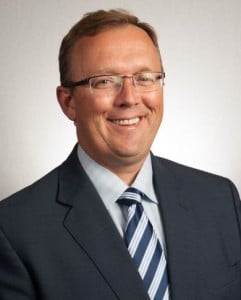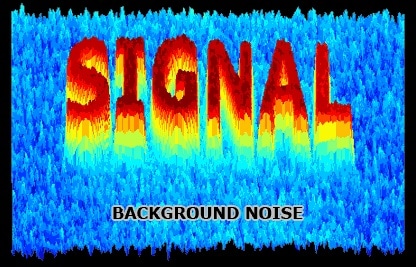New forms of counseling and customization – services that complement existing best practice clinical protocols — are needed for audiology to remain a sustainable profession in the era of patient-driven hearing aid fittings

Brian Taylor, AuD
Last Friday, October 5, in what was perceived by many to be a surprise move, the FDA approved a Bose self-fitting hearing aid that can be purchased over the counter. According to their press release, the FDA is allowing for the first time the marketing of a self-fitting hearing aid for individuals 18 years or older with perceived mild to moderate hearing impairment. The device enables users to fit, program and control the hearing aid on their own, without assistance from a licensed health care provider.
The FDA used their De Novo premarket pathway, which is used to regulate some low- to moderate-risk devices that are novel and for which there is no prior legally marketed predicate device. In their decision granting approval to market the self-fitting device, the FDA statement cited data, collected from 125 patients, which demonstrated the Bose self-fitting hearing aid lead to similar average patient outcomes when compared to a device that was prescriptively fitted by a professional. A September 2018 comparative study, published in the open access journal Trends in Hearing and cited by the Hearing News Watch in a recent article, led to similar results.
Additionally, according to the FDA’s October 5th statement, when participants self-fit the Bose hearing aid, which has been labeled to inform the consumer when to consult a hearing health care professional, the participants generally preferred their self-adjusted hearing aid settings over the professionally-selected settings.
The FDA’s October 5 press release went on to say:
“While users may fit, program and control the Bose Hearing Aid on their own, the device must comply with applicable federal and state laws regarding the sale of hearing aids, including state laws that might require hearing aids to be purchased from or dispensed by a licensed hearing aid dispenser (emphasis added). The FDA is in the process of drafting proposed regulations for a new category of over-the-counter hearing aids as required by the FDA Reauthorization Act of 2017.”
Sources tell Hearing News Watch that the Bose hearing aid will be a new product and not the Hearphone, which has been commercially available as a PSAP for more than a year. Sources also shared that Bose has no new product announcement or distribution plan for the near future. Given current state hearing aid dispensing regulations, which authorize a licensed professional be directly involved in the selection and fitting process, it seems likely Bose, by being the first to market a self-fitting hearing aid, is testing the waters to gauge both consumer interest and reactions from the professional community before launch their new self-fitting product.
It’s also noteworthy that a Bose self-fitting hearing aid isn’t necessarily the first of its type on the market. Unlike the Bose device, which uses a direct adjustment method allowing patients to determine their preferred listening settings without entering hearing thresholds into a fitting algorithm, other self-fitting hearing aids and other similar hearing devices that could be classified as self-fitting require users measure their hearing thresholds in-situ as part of the self-fitting process.
The October 5th announcement certainly drew attention from industry mainstays, as the stock of publicly traded traditional hearing aid manufacturers sank by more than 10% the Monday following the announcement, along with many fastidious posts on social media and professional listservs. The FDA announcement granting Bose authorization to market a self-fitting hearing aid could be a signal the federal regulatory body is apt to roll out more formal OTC regulations soon, perhaps well before the 2020 deadline.
Consider the FDA announcement about the Bose self-fitting hearing aid to be a shot across the bow. If you have not thought about it yet, now is a good time to ponder how audiology could be practiced differently in a marketplace where consumers do not have to make an appointment with a licensed professional to purchase hearing aids.
In the long run, self-fitting hearing aids could be just one product within a larger category of patient-driven amplification devices, which might be described as products selected, fitted and adjusted with minimal interaction with a licensed professional.
What Does the FDA Announcement Mean?
Although the FDA announcement was considered by many to be a big surprise, in some ways, the announcement was almost ten years in the making. After all, it was a working group, led by research audiologists Amy Donahue, Lucille Beck and Judy Dubno, that convened in August 2009 and issued a comprehensive report, Accessible and Affordable Hearing Health Care for Adults with Mild to Moderate Hearing Loss first drawing the attention of the profession to the issue of hearing care cost and availability.
Since then, of course, preeminent researcher Frank Lin and colleagues at the Johns Hopkins’ Cochlear Center, as well as several other distinguished academics and scientific panels have published dozens of peer reviewed studies and reports illustrating the impact untreated hearing loss has on public health and quality of daily living across the life span, including in older adults. The implications of these studies, combined with the albatross of historically low hearing aid uptake rates, should be a concern for all professionals and warrant some serious rethinking on how we provide hearing services to a broader range of people who want or need it.
Why Might It be Important to Embrace Hearing Aid Industry Regulatory Changes
Clearly, if untreated hearing loss is as serious of a condition as the recent literature suggests, and if professionals want to serve as many individuals with the condition as possible, new federal regulatory framework might be needed to get the demand for hearing care unstuck.
The one-size-fits-all approach of dispensing hearing aids, predicated on multiple face-to-face clinical appointments with a licensed professional, is effective for many individuals with hearing loss, but it still leaves more than half the hearing impaired population out in the cold unable or unwilling to see a licensed professional to obtain hearing aids.
Considering many of the behaviors associated with long-standing hearing loss in adults that often require counseling intervention from audiologists, self-fitting hearing aids, when properly labeled with vetted performance standards and sold directly to consumers, could be a valuable addition to the hearing care marketplace – something to be cautiously embraced by clinicians, not feared.
A Diverse Population Warrants a Wider Range of Service and Product Options
Patient-driven devices, including self-fitting hearing aids and multi-tasking non-custom amplifiers purchased without the assistance of a licensed professional, should be embraced because persons with hearing loss are a diverse population and the current delivery system, although proven to be effective for many, does need meet all of their varying needs. Recall data presented at a 2017 FTC workshop that approximately 75% of individuals with hearing loss are in the mild to high frequency moderate category, yet just 10% of this group uses hearing aids. Further, it is estimated there are another 25 million Americans with normal audiograms with self-identified communication deficits. Plainly, the current hearing aid service delivery model, centered on direct interaction with a licensed professional is not valued by many individuals with milder hearing loss or situational communication challenges. Perhaps the anonymous purchase of self-fitting hearing aids, which allows these individuals the chance to dabble with amplification with minimal risk to their budget, time or psyche, would be welcomed by them.
The diverse needs of people with hearing loss are not confined to degree of hearing loss categories. Today, there are more than 40 million Americans over the age of 65, and according to the Bureau of Labor Statistics about 25% of them continue to work. It is estimated that one-third of this group has hearing loss. For some working Americans, with limited financial resources, poor insurance benefits or limited time due to an incredibly busy schedule, self-fitting hearing aids could be a possible option to get the help they need.
Another factor that contributes to the diversity of persons with hearing loss is the time individuals wait to seek care. Conventional wisdom suggests a person with hearing loss waits an average of 7 to 10 years to seek help from a professional. A more careful look at the data, however, suggests a roughly equal number of individuals opt to wait more than 10 years to seek help, or wait less than a year to see a professional for an assessment. Experienced clinicians know that a person waiting more than a decade to get help for a hearing problem is likely to have far more negative attitudes and behaviors associated with hearing problems that require a licensed professional to address compared to someone proactively seeking help shortly after noticing a hearing problem. Perhaps we will find through research that some of the patients in one or both of these groups benefits from self-fitting hearing aids, thus freeing up more time in the clinic for the audiologist to conduct more meaningful personal adjustment counseling, rather than fine tune the patient’s hearing aids.
Patient-driven hearing devices don’t have to be confined to self-fitting hearing aids. Due to the convergence of hearing aid technology with consumer audio products, there are a growing number of multi-tasking products that have a core function such as music streaming and hands-free phone use and a secondary function such as amplification or biometrics. These types of products could be beneficial for some of the populations mentioned above,
Currently, there are numerous ways for individuals to purchase hearing aids online without having to see a licensed professional. What is new and potentially beneficial about a new generation of regulated self-fitting hearing aids is that, in addition to turning the controls over to qualified candidates, those that struggle with their self-fitted device could be informed via the smartphone app interface when they need to see a professional for counseling or some other service. As the next section will address, this could have a big impact on audiology.
At the end of the day, any consumer knows, it’s always good to have options.
Next week, Part 2 will address the dual role of audiology in the healthcare system and how the needs of two new appointment types that audiologists are likely to encounter as a result of self-fitting OTC hearing aids can be more effectively addressed with new counseling and customization strategies.
**All references are embedded in the links found in the article. The opinions in this article reflect only those of the author and not any of the organizations in which he is affiliated.
Brian Taylor, AuD, is the director of clinical audiology for the Fuel Medical Group. He also serves as the editor of Audiology Practices, the quarterly journal of the Academy of Doctors of Audiology, and editor-in-chief of Hearing News Watch for HHTM. Brian has held a variety of positions within the industry, including stints with Amplifon (1999-2008) and Unitron (2008-2015). Dr. Taylor has more than 25 years of clinical, teaching and practice management experience. He has written and edited six textbooks, including the third edition of Audiology Practice Management, recently published by Thieme Press. He lives in Minneapolis, MN and can be reached at [email protected]
*feature image courtesy of Cambridge in Color







